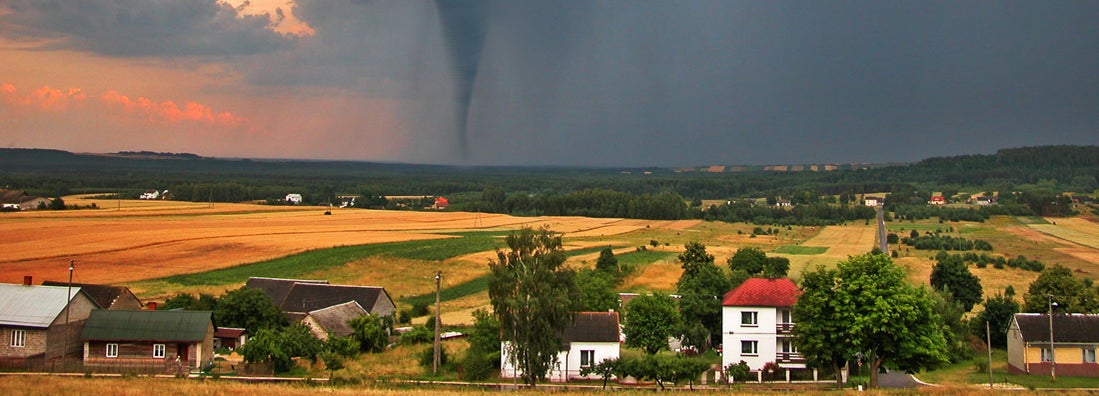What to Do Before, During and After a Tornado

According to NOAA, there were over 1,400 tornadoes in 2017. And while tornadoes can strike whenever they please, they're most likely to wreak havoc from April onward til the clock strikes midnight on your summer.
It's no secret that tornadoes seriously blow, leaving devastation and destruction in their wake. Most importantly, your favorite television metereologist can't always predict when they're coming. This makes it even more important that you know what to do before, during and after a tornado hits.
Before the Tornado
Any steps you take before the tornado are about planning and being alert to your surroundings. You can do so through the following:
- Know the Signs - Know what alarms or notifications the government uses for tornado watches or warnings.
- Plan Ahead - Have a dress rehearsal to make sure everyone is fully prepared to take responsibility for his or her own safety.
- Watch the Weather - Changing weather patterns are like a cheat sheet telling you a tornado might be coming. Pay attention to weather reports and rely on your own instincts and experience.
- See for Yourself - Nature doesn't try to pull a fast one when a tornado is coming. Look for a dark, greenish sky, a wall of clouds and large, grapefruit-sized hail.
- Listen - Aside from the alarms, some say tornadoes produce a roar similar to a train.
During the Tornado
There's a tornado literally at your doorstep. Don't stop, drop and roll. Instead, do this:
- Go Underground - If there's no basement, a small room in the middle of the house is best. And since windows can break, stay away from them at all costs.
- Go Underneath (Furniture) - Hold on to a heavy table or desk and use your arms to protect your head and neck. It could save your life.
- Know When to Leave - If you live in a mobile home, even if it has tie-downs, you should seek safer shelter (if possible).
- Stay Flat - If your home isn't safe, go outside and lie flat on the ground with your hands over your head and neck.
- No Ridin' Dirty - If you're in a car, get out and get inside or lie down in a low area. If you're outside, lay with your hands over your head and neck.
- Get Low - If you're in a high-rise building, go to an interior room on the lowest floor. The whole "window breaking" thing still applies, so stay away from them.
After a Tornado
Once the tornado has passed, check for people who might've been injured or trapped. Do not move them unless they are in immediate danger of further injury. Call for help. Celebrate your newfound heroism. Then look around, and survey what you might've lost for your impending insurance claim.
Making an Insurance Claim Following a Tornado
Your homeowners insurance policy has coverage for natural disasters. If you have questions about how your homeowners insurance protects your property from damage from tornadoes, contact a Trusted Choice ® Independent Agent - they'll know exactly what you get from your policy.
http://www.spc.noaa.gov/climo/online/monthly/newm.html
